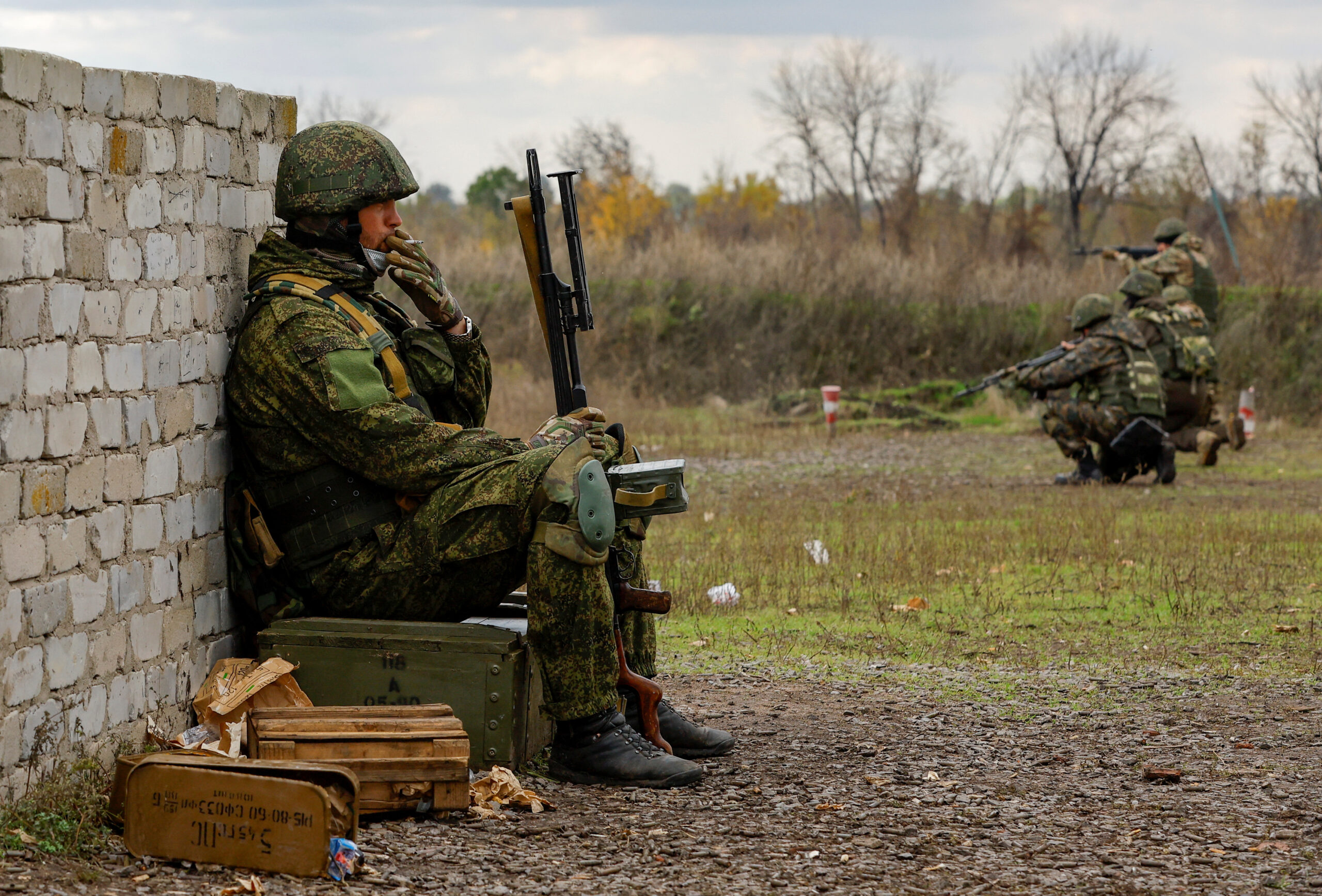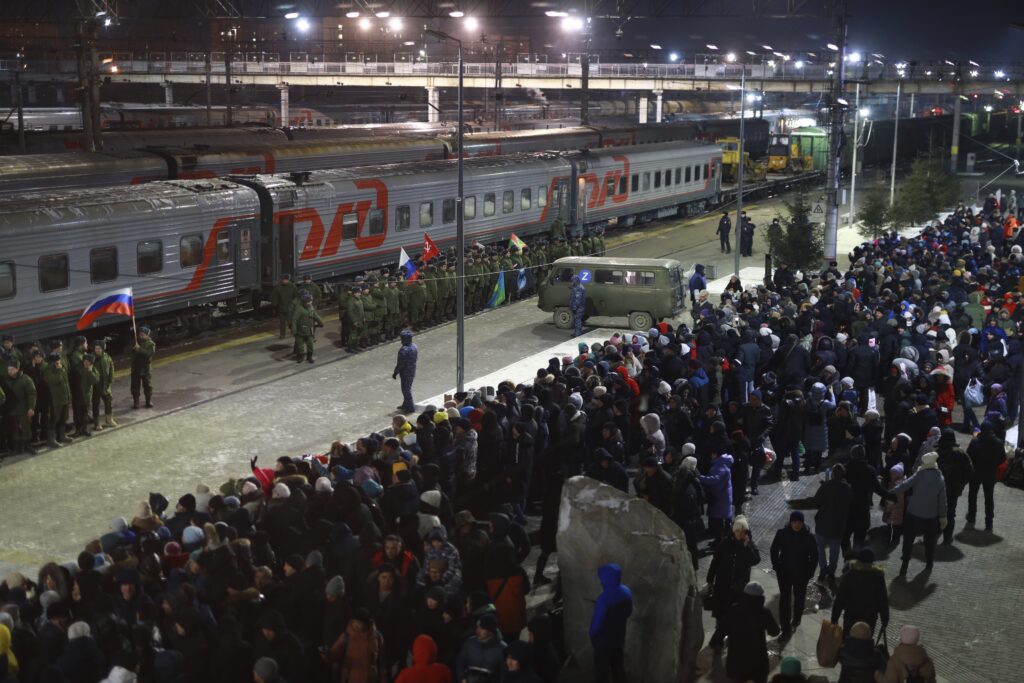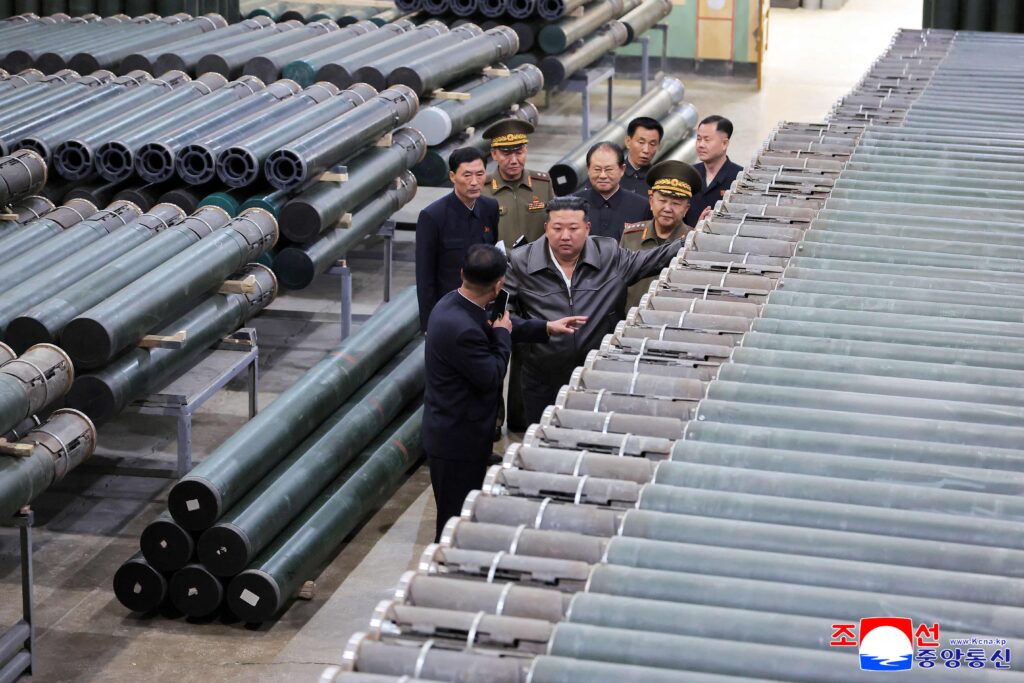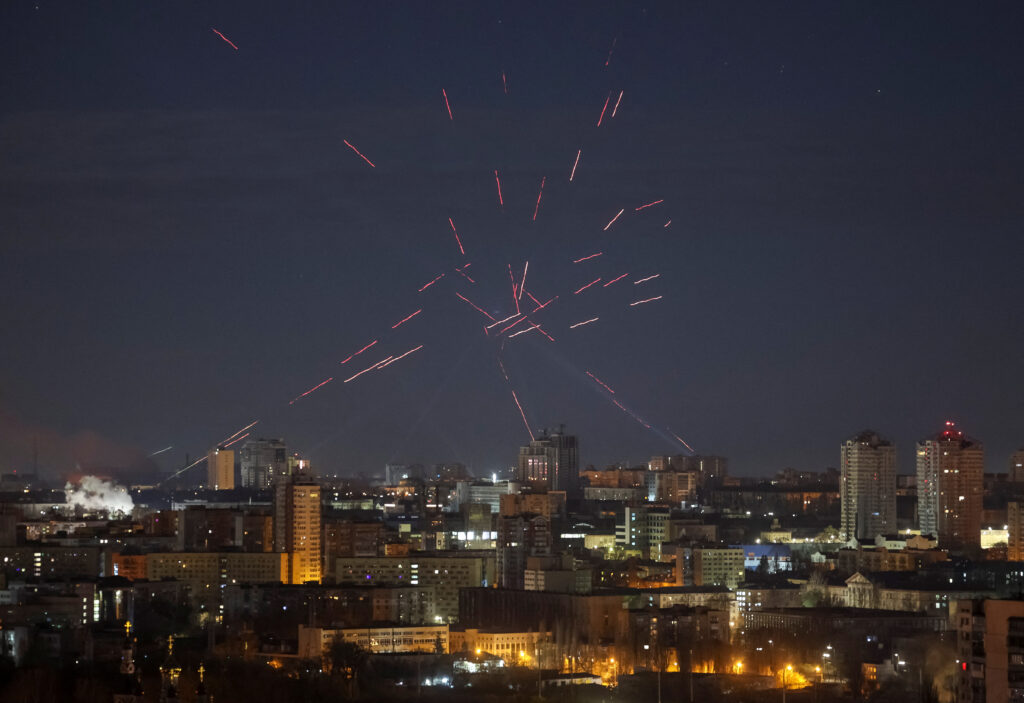In a recent interview with The Economist, the commander-in-chief of the Ukrainian Armed Forces Valery Zaluzhny delivered a long-needed dose of reality. «Just like in the First World War,» he said, «we have reached the level of technology that puts us into a stalemate. There will most likely be no deep and beautiful breakthrough.»
The admission that a long war lies ahead comes at a strange moment for bureaucrats in Moscow tasked with keeping Russia’s war machine afloat. The slow militarization of the Russian economy and cumulative effect of sanctions have ripped up the foundations of macroeconomic stability that policymakers have relied upon for much of the last quarter century. Defense spending is officially slated to rise from 3.9% of GDP this year to 6% next year, a figure that almost certainly obscures real levels of expenditure; the classified portion of outlays has reached a record 27% and ever more state resources are directed towards the war efforts. In normal conditions, these expenditures would be manageable.
Now, however, the stability of the ruble is largely hostage to the country’s export earnings (dominated by oil exports) and whether the government can repatriate capital deposited abroad. A weaker ruble rapidly translates into higher inflation. So many consumer goods and industrial inputs are imported, plus demand for imports has been boosted by the surge in spending on the war and shortages of labor driving up wages. Meanwhile, minimizing budget deficits hinges on a weaker ruble, which increases state tax receipts from oil & gas and correlates to stronger non-oil & gas tax revenues from improved tax collection, rising rates on business, and rising wages increasing income tax revenues.
Policymakers are also immobilized by the need to quash inflation ahead of presidential elections next March. Since the start of the special military operation, inflation has become harder to assess holistically. Central bank surveys show large spikes in the gap between expected inflation and observed inflation; despite topline inflation slowing significantly to the 6−7% range right now in annualized terms, underlying trends point to greater price increases. In response, Russia’s central bank governor Elvira Nabuillina hiked the key rate to 15% from 13% in late October anticipating growing pressure on households as businesses react with price hikes. Those pressures have been borne out by surveys since. Inflation has ticked up to 7.4% in annualized terms despite the beginnings of a consumer slowdown from rising interest rates.
Rethinking Russia’s Economic Constraints
The past 18 months have been a trying time for observers and forecasters making sense of the qualitative significance of the data available on the performance of the Russian economy in wartime. Rising wages and evidence of strong growth — updated forecasts from the Ministry of Economic Development show GDP growth at or above 3% for 2023 — paint a picture of economic health and stability. Yet as Moscow and Kyiv settle in for a long war, the Russian economy increasingly depends on a tenuous balance that domestic policies can only do so much to control. Observers should not take Russia’s more expansive capacity to provide munitions, materiel, and manpower for the war as a static, perpetual advantage without rising costs.
The EU has delivered in the range of 30−40% of its commitment of 1 million 155 mm shells — a NATO-standard caliber for guns and howitzers providing direct and indirect fire support — while the US has delivered over 2 million rounds since February 2022 by paying allies to release their own stockpiles. Immense uncertainty over the intensity of materiel use remains, but US estimates point to Ukraine using 4−7,000 rounds a day along the front compared to as much as 20,000 by Russia. Taking a generic average, that comes out to about 165,000 rounds a month vs. as much as 600,000 rounds a month, an immensely taxing industrial effort for both parties. Current western estimates show Russia can produce about 2 million rounds a year alongside dramatic increases in production for other long-range systems, tanks, and more despite western sanctions.
Behind these dramatic output increases, economic data tells a more complex story. Since April, there’s hardly been any increase in manufacturing output across the Russian economy when figures are seasonally adjusted, and even a slight downtick between September and October. This does not mean there is no capacity to sustain further expansions, but rather that the initial increases sustained by rising defense spending, which allowed the complete utilization of existing plants, are largely over. The same dynamics are observed for the general industrial index of activity, highlighting that substitution is not taking place for consumer products at scale. Rather civilian manufacturing in key industries such as aviation is being subsumed to the war effort. But the initial boost from surging spending is over.
Military plants require machine tools, the equipment that mold precision parts used in manufacturing that cut, bore, and otherwise shape rigid materials into intermediate inputs that are assembled together to produce a product. On November 2, OFAC rolled out sanctions on 130 individuals and entities involved in selling and distributing an array of machine tools and related components to Russian firms in an effort to tighten the noose on Russian firms’ ability to procure inputs to sustain higher production levels. These are particularly notable for going after businesses in the UAE and Turkey, but can do little to stop Russian firms from buying Chinese equivalents. The EU is now looking to ban machine tool exports formally in its 12th sanctions package as well.
These measures will do little to formally cutoff access to the parts needed to expand manufacturing facilities by themselves as Russian importers have pivoted to Chinese suppliers. The problem, however, is that Chinese kit available for import typically does not last as long as its European or Western equivalents. Rising sanctions pressure can also increase procurement costs as suppliers in China exploit diminishing competition from other markets and operating costs as businesses replace European systems with Chinese replacements to minimize potential for disruption. Russian producers remain dependent on imports of composite metals for weapons systems due to dramatic failures of state policy, swapping out Europe for Chinese suppliers there as well.
Gaps remain sourcing things domestically. Difficulty replacing American carbon fiber for the civilian MC-21 airliner meant that sourcing domestically-produced equivalents left the wings of the aircraft 300kg heavier than expected, reducing its fuel efficiency. Russian machine tool producers don’t compete on price or volume with Chinese counterparts, but benefit from their ability to adapt to local orders increasingly defined by military consumers owned by the state. Any longer-term expansions of capacity will therefore rely entirely on state orders affected by the state’s ability to limit deficit spending from elsewhere.
Labor Pains
Any expansion of production requires people. Unfortunately, the shortage of available labor has created conditions in which inflation is becoming more embedded structurally in the economy. Since the invasion began, the population of ‘surplus’ labor available has fallen from roughly 1.25 million to 500,000. Labor shortages are now overwhelming businesses. A new analysis from Yakov & Partners (formerly McKinsey’s Russia division) estimates the economy will broadly be short 2−4 million workers by 2030 per current trends. The number of job vacancies in Q3 2023 were 230% higher than Q3 2022, with the worst shortages seen in IT, logistics, manufacturing and agriculture. That’s showing up in pay packets.
Jobs paying more than 100,000 rubles a month now comprise over 5% of all job vacancies, a 240% increase over 2022. Employees have been offered huge raises in state companies in exchange for signing on to what amount to loyalty pledges regarding the war, just as key roles in military manufacturing plants are exempt from mobilization. Military industries require large numbers of skilled workers and managers to operate successfully, which is feeding into structurally higher levels of inflation. Investment into fixed assets is up over 7% in annualized terms, but crucially higher wages are not reflected in the structure of what’s being built. Investment into retail and construction, the latter of which has been driven by subsidized mortgages for new homes since 2020, are down 7.5% and 10.8% respectively.
If workers were winning out, we’d expect to see retail rising given Rosstat figures show average wages have risen 30% in the last year. Yet the same data also shows inequality got slightly worse in that time. The problem is simple: any business expansion to meet demand requires more people to work more jobs. More and more of the jobs available or that protect someone from being mobilized lie in manufacturing and the defense sector writ large or serving pent up demand from consumers, most notably for things like domestic tourism. State policy is about to pour gasoline on the fire as Putin has now announced an expansion of the army’s standing military forces and support personnel by 170,000 people. Add to this rising numbers of tens of thousands of amputees and once healthy individuals taken out of the productive workforce, injured, and then unable to work full-time, in physically demanding jobs, or without considerable accommodation and state support. When businesses simply can’t find or compete for labor against state jobs whose salaries have been boosted or provided ‘privileges’ to dodge potential service at the front and components are in some cases difficult or more expensive to source from abroad without state support, imports cannot be effectively substituted without large dislocations of labor across industries and immense geographic distances.
Mobilization a la Russe
The Bank of Russia has only one lever to pull to get ahead of the uptick in inflation despite worsening business indicators: raise interest rates. The efficacy of higher rates has been diminished by capital controls and the extension of subsidized credits to state enterprises and systemically important businesses in the first months of the invasion. As of the start of November, 11 trillion rubles’ worth of corporate credit — about 7% of GDP — were offered on a subsidized basis against the key rate. With interest rates now at 15% and likely to continue rising, large firms are panicking that the costs of servicing debt will skyrocket as they roll over older loans into new ones affected by the base rate. There are few options to fix this: raise prices to make more money to pay off debt, slash labor costs to improve profits to pay off debts (which can only be achieved through a rise in productivity requiring investment), or a renegotiation of subsidized credit from the state.
The first option worsens inflation in the immediate term and loses customers, the second option is prohibitively expensive with interest rates this high and rising. The last option also worsens inflation and further weakens the power of higher interest rates to dampen spending and investment. Meanwhile, consumers feel the brunt of higher rates as their ability to buy homes, cars, and other big ticket items that typically require insurance policies or are affected by rates on credit cards is dampened despite large nominal increases in their wages. For other goods, they buy imports that tick up in price whenever the ruble weakens.
The ‘easy’ part of mobilization is over. Russian policymakers have been fortunate to enjoy a reliably large current account surplus generating savings and tax receipts to underpin war spending, ample unused capacity at existing military plants to increase output when needed, and enough of a clear manpower advantage over Ukraine to afford immense losses in a war of attrition. Just because the economy is half-mobilized for war does not mean it can sustain its present disequilibrium for long without further changes in policy that pose significant risks. Patrushev’s dream of a true mobilization economy would effectively mean the nationalization of all industry and reintroduction of planning by direct fiat, not just the allocation of budget resources or access to credit.
Oil markets have also turned against the Kremlin. Escalating efforts to enforce the G-7 price cap are effective primarily because of growing consensus that demand is weakening. OPEC+ barely agreed to a coherent communique out of its last meeting and oil prices are hovering below $ 80 a barrel thanks to a cumulative 5 million barrels a day of oil production cuts by members that have been exposed as ‘voluntary.’ Tighter scrutiny on shipping firms has begun to dissuade Greek shippers from taking on contracts, but is most effective because a buyer’s market gives third-parties and importers more latitude to demand discounts and other concessions.
Structurally, the Russian budget can only maintain the 1−2% GDP deficit target by increasing taxes on business. This process then denies businesses profits that can be invested into production, efficiency enhancements, and other needs. Raising taxes on households will eventually make more sense since wage increases are huge without a concurrent domestic expansion of consumer durables production, creating constant risk of downwards pressure on the ruble as imports rise relative to weaker export earnings. The US government’s stated goal of halving Russia’s oil & gas revenues by 2030 is achievable by market trends alone. Though there remains space for the Ministry of Finance to offset these losses, doing so will weaken the economy’s capacity to sustain any further expansions of output needed to fight the war.
No solutions can fix other structural problems hindering Russia’s evolution into a wartime economy. Shortages of project cargo equipment have pushed shippers to rely more heavily on railways struggling to adapt to the economy’s pivot eastwards. Where the average cargo delivery from St. Petersburg or Novorossiysk once traveled 2,000 km, its journey is now more like 8,000 km. The recent Ukrainian-backed sabotage of crucial rail chokepoints for rail delivery between China and Russia in Siberia point to another set of problems: spending on infrastructure security, the immense distances military deliveries frequently travel, and the costs they impose driving up transport prices — terrible for small and medium-sized businesses — as well as risks of considerable disruptions from two decades of underinvestment in additional rail capacity.
Ukraine and Russia are now engaged in what will be a very long, constantly active and all-encompassing war, one in which Russia maintains distinct advantages in sheer weight of numbers and resources over Ukraine that cannot be ignored. But many of these advantages are eroding as the economic system that holds them together is destabilized and facing significant difficulties further expanding its ability to produce materiel. The next military expansion alone will erase nearly half of the remaining surplus labor in the country when it can least afford to give workers political bargaining power. Even if western sanctions pose only short-term irritants or constraints, they can force a traditionally slow-moving political system that operates by its own curious, coercive consensus to make far more difficult decisions than it has made thus far.










